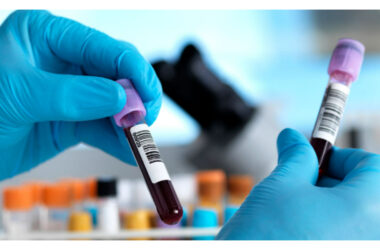Prostate health is a major concern for men as they age, with prostate cancer being one of the most common types of cancer among men worldwide. While prostate cancer is often slow-growing and can be managed successfully with early detection, many men are unaware of the importance of proactive screening and the factors that affect prostate health. This lack of awareness can lead to delayed diagnoses and missed opportunities for early intervention.
In this blog post, we’ll explore what prostate cancer is, why screening is important, the risk factors associated with the condition, and the different approaches to screening and treatment.
What is Prostate Cancer?
The prostate is a small, walnut-shaped gland located below the bladder in men. It plays an essential role in the male reproductive system by producing seminal fluid that helps transport sperm. Prostate cancer occurs when abnormal cells in the prostate begin to grow uncontrollably, forming a tumor.
While prostate cancer is often slow-growing and may not show symptoms in its early stages, it can spread to other parts of the body (metastasize) if left untreated. Early detection of prostate cancer is crucial because treatment options are more effective in the early stages, leading to better outcomes and survival rates.
Risk Factors for Prostate Cancer
Like many cancers, the risk of developing prostate cancer is influenced by a variety of factors. While not all of these risk factors are modifiable, understanding them can help men make informed decisions about their health and screening.
- Age
- Age is the most significant risk factor for prostate cancer. The likelihood of developing the disease increases with age, especially after the age of 50. Most prostate cancers are diagnosed in men aged 65 or older.
- Age is the most significant risk factor for prostate cancer. The likelihood of developing the disease increases with age, especially after the age of 50. Most prostate cancers are diagnosed in men aged 65 or older.
- Family History
- Having a family history of prostate cancer can increase a man’s risk. If a father, brother, or other close male relative has had prostate cancer, a man’s risk of developing the disease may be higher. This suggests a genetic link, although the exact cause of the increased risk is still being studied.
- Having a family history of prostate cancer can increase a man’s risk. If a father, brother, or other close male relative has had prostate cancer, a man’s risk of developing the disease may be higher. This suggests a genetic link, although the exact cause of the increased risk is still being studied.
- Race/Ethnicity
- African American men are at higher risk of developing prostate cancer compared to men of other racial or ethnic groups. Additionally, African American men are more likely to develop aggressive forms of prostate cancer. On the other hand, men of Asian descent have a lower incidence of prostate cancer.
- African American men are at higher risk of developing prostate cancer compared to men of other racial or ethnic groups. Additionally, African American men are more likely to develop aggressive forms of prostate cancer. On the other hand, men of Asian descent have a lower incidence of prostate cancer.
- Genetic Factors
- Certain inherited gene mutations, such as BRCA1 or BRCA2 (commonly associated with breast and ovarian cancer), may also increase the risk of prostate cancer. Men with these mutations are at a higher risk of developing prostate cancer at a younger age and may develop more aggressive forms of the disease.
- Certain inherited gene mutations, such as BRCA1 or BRCA2 (commonly associated with breast and ovarian cancer), may also increase the risk of prostate cancer. Men with these mutations are at a higher risk of developing prostate cancer at a younger age and may develop more aggressive forms of the disease.
- Diet and Lifestyle
- Diets high in red meat, dairy products, and fats may contribute to an increased risk of prostate cancer. Conversely, a diet rich in fruits, vegetables, and healthy fats (like those from fish and olive oil) may reduce the risk. Additionally, a sedentary lifestyle and obesity are associated with a higher risk of developing prostate cancer.
- Diets high in red meat, dairy products, and fats may contribute to an increased risk of prostate cancer. Conversely, a diet rich in fruits, vegetables, and healthy fats (like those from fish and olive oil) may reduce the risk. Additionally, a sedentary lifestyle and obesity are associated with a higher risk of developing prostate cancer.
- Environmental Factors
- Exposure to certain environmental factors, such as chemicals or industrial toxins, may increase the risk of prostate cancer. This is still an area of ongoing research, but it’s thought that environmental toxins may contribute to the development of the disease.
- Exposure to certain environmental factors, such as chemicals or industrial toxins, may increase the risk of prostate cancer. This is still an area of ongoing research, but it’s thought that environmental toxins may contribute to the development of the disease.
The Importance of Prostate Cancer Screening
Prostate cancer often does not cause noticeable symptoms in its early stages, which is why routine screening is essential for men, especially those at higher risk. The goal of screening is to detect prostate cancer before symptoms appear, when the disease is most treatable.
There are two main methods of screening for prostate cancer:
- Prostate-Specific Antigen (PSA) Test
- The PSA test is a blood test that measures the level of prostate-specific antigen, a protein produced by the prostate. Elevated PSA levels can be a sign of prostate cancer, although high levels can also result from other conditions such as an enlarged prostate (benign prostatic hyperplasia, or BPH) or a prostate infection.
- The PSA test is a blood test that measures the level of prostate-specific antigen, a protein produced by the prostate. Elevated PSA levels can be a sign of prostate cancer, although high levels can also result from other conditions such as an enlarged prostate (benign prostatic hyperplasia, or BPH) or a prostate infection.
- A high PSA level doesn’t necessarily mean that a man has prostate cancer, but it may prompt further testing, such as a biopsy or imaging tests, to confirm whether cancer is present. However, PSA testing has been controversial in recent years because it can lead to overdiagnosis and unnecessary treatments for cancers that may not be life-threatening.
- Digital Rectal Exam (DRE)
- During a DRE, a healthcare provider inserts a gloved finger into the rectum to feel the prostate for abnormalities, such as lumps or hardness, which could indicate the presence of cancer. The DRE is often performed in conjunction with the PSA test for a more comprehensive assessment.
- During a DRE, a healthcare provider inserts a gloved finger into the rectum to feel the prostate for abnormalities, such as lumps or hardness, which could indicate the presence of cancer. The DRE is often performed in conjunction with the PSA test for a more comprehensive assessment.
When Should Men Begin Screening?
The American Cancer Society (ACS) and other health organizations recommend that men discuss prostate cancer screening with their healthcare provider starting at age 50. However, men at higher risk—such as those with a family history of prostate cancer or those of African American descent—should begin discussions with their doctor at age 40 or 45.
It’s important to note that prostate cancer screening is a personal decision and should be based on an individual’s risk factors, health history, and preferences. Some men may choose to undergo screening while others may decide against it, especially if they have a limited life expectancy or do not want to pursue aggressive treatments if cancer is detected.
What Happens If Prostate Cancer is Detected?
If prostate cancer is detected through screening, further tests and evaluations are necessary to determine the stage and aggressiveness of the cancer. This is often referred to as “staging” and helps guide treatment decisions. The staging process typically involves:
- Biopsy: A sample of prostate tissue is taken and examined under a microscope to confirm whether cancer cells are present and determine the type of cancer.
- Imaging Tests: CT scans, MRIs, or bone scans may be ordered to assess whether cancer has spread to other parts of the body.
Treament Options for Prostate Cancer
Treatment for prostate cancer depends on the stage and aggressiveness of the disease. Options may include:
- Active Surveillance: For men with low-risk, slow-growing prostate cancer, active surveillance may be recommended. This involves monitoring the cancer with regular PSA tests, biopsies, and DREs to ensure it doesn’t progress.
- Surgery: A prostatectomy, or surgical removal of the prostate, is often recommended for localized prostate cancer. The procedure can be performed through traditional open surgery or minimally invasive techniques, such as robotic-assisted surgery.
- Radiation Therapy: High-energy radiation is used to target and kill cancer cells. Radiation therapy may be used as a primary treatment or after surgery to kill any remaining cancer cells.
- Hormone Therapy: Hormone therapy is used to lower the levels of testosterone, a hormone that fuels the growth of prostate cancer cells. It’s often used for advanced prostate cancer or when cancer recurs after other treatments.
- Chemotherapy and Immunotherapy: For advanced or metastatic prostate cancer, chemotherapy or immunotherapy may be used to shrink tumors, alleviate symptoms, and extend survival.
Conclusion
Prostate health is an important concern for every man, and understanding the risks, signs, and available screening options for prostate cancer is key to early detection and effective treatment. Prostate cancer may be common, but it is also treatable, especially when diagnosed early. By discussing prostate cancer screening with a healthcare provider, men can make informed decisions about their health and take proactive steps toward protecting their long-term well-being.
If you or a loved one are concerned about prostate health, don’t hesitate to reach out to a urologist. A specialist can help you understand your individual risk factors, guide you through the screening process, and recommend the best course of action based on your personal health profile. We recommend urologist brooklyn.
















